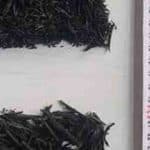Writers:
MUHAMMAD ARSHAD,
Himalayan Wildlife Foundation,
KHURRAM JAMAL SHAHID
Sustainable Development Organization, AJK
Abstract.- A study was conducted in July 2019 to determine the illegal harvesting and trade of medicinal plants in Musk Deer National Park, Azad Jammu and Kashmir. The area is declared as National Park by the Government of AJK in 2007. Gagai and Dudgai areas in the Musk Deer National Park (MDNP) Gurez are included in the core zone and are the habitat to several endangered species of precious and semi-precious medicinal plants. These herbs include Saussures costus, Aconitum heterophyllum, Trillium govaniana, Fritillaria pallidiflora and Viola fedtschenkoana.
These plants grown at the elevation of 7500 feet to 10,000 feet from sea level. Increase in population has increased their daily uses which have accelerated natural resource depletion and create species imbalance. The forest cover which is natural protective cover of the medicinal plants is shrinking day by day. Much increase in human population along with their increasing number of livestock has posed a serious threat to the related biomass of the area.
Majority of people living in MDNP is depending on the harvesting of these herbal plants. They start excavation early in summer, without government approval and even without proper scientific methodology defined for the harvesting of these endangered species. These malpractices are now threatening the existence of the said species.
Key words: Medicinal Plants, Caring Capacity, Habitat Suitability, Over Extraction, Musk Deer National Park, AJK.
INTRODUCTION
Medicinal Plant are bestowed with materials for survival, which is economic, medicinal, forage values (Morgan, 1981). Medicinal plants have a rich resource, which spread over a wide range of eco-zones of AJK. About 2000 medicinal plants species are known in Pakistan among which 62 species are found in Neelum districts of AJK. From a quite a long time medicinal plants are being utilized unsustainably by locals. In these districts forest department auctions the collection of some plants, under this auction many medicinal plants are collected indiscriminately leaving little chance for their regeneration.
Due to rich valuable resources of flora and fauna, Government of Azad Jammu and Kashmir (AJ&K) has declared Gurez valley as national park in 24-9-2007. It was declared from Co. 1 to 33 Saonar block and 16 to 42 Janwai block, as the Musk Deer National Park (MDNP).Total area of national park is 130510 acres {Govt act no ESJFV 4238-47(14)7}. While the area of whole Gurez valley is covering an area of 13,532 hectares (33,437 acres). Out of total 157,284 acres land, about 96% land is not under any agricultural use. Only 3.5% land is under cultivation, while the rest of the area covered either by forests or by pastures, due to the slope of the land, the plot size is very small and terraced cultivation is common. Due to single cropping system, agricultural production is very limited.
The communities of MDNP comprises of 19 villages that are economically fully dependent of natural resources of the park.
Brief case studies illustrate that most of the economy in the project area depends on land-based livelihoods, like, forests, agriculture, livestock, employment and labour. In general, terms MDNP area counted as one of AJK least developed and backward regions. The economy of the project area is inherent due to the following features:
• Outflow of local resources causing problems for communities of the area
• Insufficient off-farm employment
• Community reliance on local livestock and forest resources
• Very less practices of subsistence agriculture
Majority of people living in MDNP is depending on the harvesting of these herbal plants. They start excavation early in summer, without government approval and even without proper scientific methodology defined for the harvesting of these endangered species. These malpractices are now threatening the existence of the said species.
Current situation
People from different villages in MDNP, especially from Followi, Halmat, Saonar, Hanthi, and Taobat move to seasonal habitats in core zone of the MDNP and start excavation of above mentioned medicinal plants early in summer. Recommended season of excavation for these plants starts in September while excavation is already started in June when neither roots nor seeds of the plants are ready. Even though Government of Azad Kashmir havent called the tenders of excavation of medicinal plants so far but local communities are already done with their job. Excavation is mostly carried out in Gagai, Shakar Garh, Dudgai and Losar. The majority of medicinal plants are naturally found in moist temperate coniferous forest, sub alpine and high alpine pastures.
These habitats are either occupied by permanent human settlements or seasonal grazers (local seasonal migrants, nomads Bakarwals) In these remote areas about 60% of the local population (children, women) other then nomads are engage in Collection and processing of different medicinal herb. It is estimated that these 60% household are annually earn 350,000 to 400,000 from collection and then sailing of these medicinal plants in the area. These collectors are much ignorant about the proper time of collection, processing, storing and marketing. Their mishandling with plants causes much loss to these natural resource and as well as to whole biodiversity.
Lack of scientific knowledge about the parts used and proper time of collection there is misuse of these plants. The proper timing of collection of desired part of plant often determine the yield percentage and quality of ingredients In the remote and hilly areas of Gurez Valley, in the absence of modern facilities of health, Medicinal plants provide a comparatively vital role for the remedies of diseases and economic resource for local people. Medicinal plants are under heavy biotic pressure in the form of humanitarian activities like deforestation, overgrazing, overexploitation, smuggling and unscientific ways of collections for daily uses. Naturally having low regeneration power and constant high rate of extraction, medicinal plants are becoming sparse from their potential habitats. This condition coupled with the loss of soil moisture, rapid erosion and loss of overall biodiversity of the area.
Excavation is done every year without following scientific methodology and recommendation. As a result, the production of these medicinal plants is decreasing day by day. In most of the areas, carpet excavation has resulted disappearance of several fauna species as well as caused massive land sliding in the park areas.
Role of the State Departments
It seems that department of wildlife especially local staff neither has an interest nor proper training of conservation and park management. They claim the shortage of manpower and workforce to cover all areas of the park. Current staff never had visited the park area to stop illegal excavation. They also complain that majority of the people digging out the herbs are women and children. According to local culture if male staff will try to stop or cease the excavated herbs from a woman, it will be considered against the local culture and will result a conflict among communities and park management.
Nagative Impacts
• During the digging, top soil is disturbed and after rainfall, rill erosion starts that causes land sliding.
• Excavation of immature and unripe herbs effects the further production and growth of the plants.
• Continues and unscientific excavation would left the negative effects on biodiversity in the region, especially in park areas.
• It has created a situation of food scarcity for native wildlife.
• Habitat degradation is also an impact of the unscientific excavation.
• It is the open violation of the park rules which has threatens the existence of several endangered species.
Management Policy
In Musk Deer National Park the plant communities have been largely disturbed due to deforestation for fuel, over consumption of medicinal resources for the treatment of diseases, population explosion, increased tourism and other environmental hazards. Due to indiscriminate cutting, not only the forest area is declining but valuable indigenous species are in danger and if this inclination continues, the ultimate result would be the extinction of these species from the area. Hence, direct conservation measures as proposed below are urgently required in order to protect the taxon from extinction. Conservation of medicinal plants is the need of time. To achieve this goal it is the time to identify their relative economic, local and international medicinal values and then disseminating this information amongst local communities as detailed awareness campaign. These include,
• Proper documentation and conservation of indigenous knowledge need to be done,
• Appropriate training of the local communities about the conservation and sustainable utilization of medicinally important flora needs to be
given,
• Overgrazing and deforestation should be abridged.
• Permanent monitoring programs should be developed.
• Natural gas should be introduced in the area as an alternate fuel source.
• Promote forest management practices that benefit biodiversity conservation,
• Proper health facilities should be provided to local people, and awareness programs at grass root level should be introduced.
• Excavation of endangered species should be banned at once and for all.
• Park staff should be trained properly and more staff should be hired for protection of park areas.
• Effective patrolling mechanism should be established to stop illegal, unscientific and off season excavation.
• Community should give a right of collective ownership and community bases harvesting should be introduced in park areas.
• Excavation should only allow once in five year.
Follow the PNI Facebook page for the latest news and updates.








